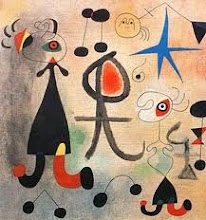“Art is discovery, a way of looking
at the world as though seeing it for the first time.”
-- Guy Hubbard
at the world as though seeing it for the first time.”
-- Guy Hubbard
Art making has been traditionally viewed from a “learning-to-draw” lens as a frill subject that only a few privileged children born with artistic talent could profit from. It has been looked upon as the extravagant career option for very wealthy folks or for daydreamers who lack the common sense to aspire a sensible career like business administration, law or medicine. Although only a small percentage of children or youth may ever pursue a visual arts career, a thoughtfully designed art program could make a fundamental difference in educational development.
Art education is moving from the “learning-to-draw” postulate to a paradigm where the emphasis is “drawing-to-learn”. In this wider, more encompassing discipline, art is a medium for learning, capable of strengthening other domains of intellectual development through creative right hemispheric processes. Many students have the disposition to prepare creative presentations or projects, but they often consider themselves unqualified in generating original fresh ideas. In a world that is quick to offer limitless ready-made ideas, people usually settle for dull, stereotyped notions.
Creativity is the ambiguous road that leads to self-confidence. Through the rich perspective of the artist, students have the opportunity to transcend to higher levels of learning.
(1) to become keen observers of life
(2) to look for answers in unexpected places (a relentless passion for the inductive process that leads to discovery)
(3) to experience life from a different and unusual viewpoint
(4) to convey freshness to an often times insipid reality
(5) to develop intense laser-like concentration
(6) to show readiness to take (prudential) risks
(7) to be tentative and consider multiple possibilities
(8) to make ideas visible in imaginative, engaging ways
Visual Arts instruction is flexible to multiple levels of artistic competency. Theory is mastered through the practice of visual design. Individuality is expressed through a diversity of media offerings while both spectrums of traditional and contemporary visual design pervade. Art students observe a guideline of artistic proficiencies such as the elements and principles of design, originality, theme development, media exploration, planning a project, organization, and presentation.
Text: Edwards, Betty. Drawing on the Artist Within. New York: Fireside, 1987.
Drawing on the Artist Within: A Guide to Innovation, Invention, Imagination and Creativity
This unit deals with you. It will help you discover new dimensions of problem solving and self-expression through the artist's way of seeing and depicting visual ideas and thoughts. This ground-breaking, based on the latest scientific research on both sides of the brain, show how anyone can quickly and spectacularly accomplish better artistic work and more creative thinking that can be applied to other disciplines and working fields.
Creativity is the force that drives problem solving, informs effective decision-making and opens new frontiers for ambition and intelligence. Those who succeed have learned to harness their creative power by keeping that light bulb turned on.Betty Edwards, has decoded the secrets of the creative process to help you tap your full creative potential and apply that power to everyday problems. How does Betty Edwards do this? Through the metaphor of drawing – a metaphor you can process to see problems in new ways.Through simple step-by-step exercises that require no special artistic abilities, Betty Edwards will teach you how to take a new point of view, how to look at things from a different perspective, how to see the forest and the trees, in short, how to bring your visual, perceptual brainpower to bear on creative problem-solving.
As you work through this unit, you will be creating a journal, which means you are recording your personal impressions and insights. As you develop the 'habit of creativity' you also develop an intuitive awareness. It is also a means of communication, a holding place for ideas to share with other artists and students who wish to learn. Your journal is a safe place where you can experiment with abstractions. It will facilitate an unveiling of ways to express emotions and feelings. Above all this safe haven of personal expression can become for you (if you let it) a source of relaxation. As an artistic venture your journal will naturally evolve into your precious planning tool.
Questions for reflection:
What is your definition of creativity?
How does creativity help interpersonal relationships?
Do you think you have the soul of an artist? If your answer is yes, when did you notice you were unique that way?
Do you find it easy to create? Explain.
Is there anything you feel compelled to achieve in the future that gives you a sense of mission or purpose in life and that you feel separates you from the mass?
What do you think keeps you from conforming to mainstream society?

No comments:
Post a Comment